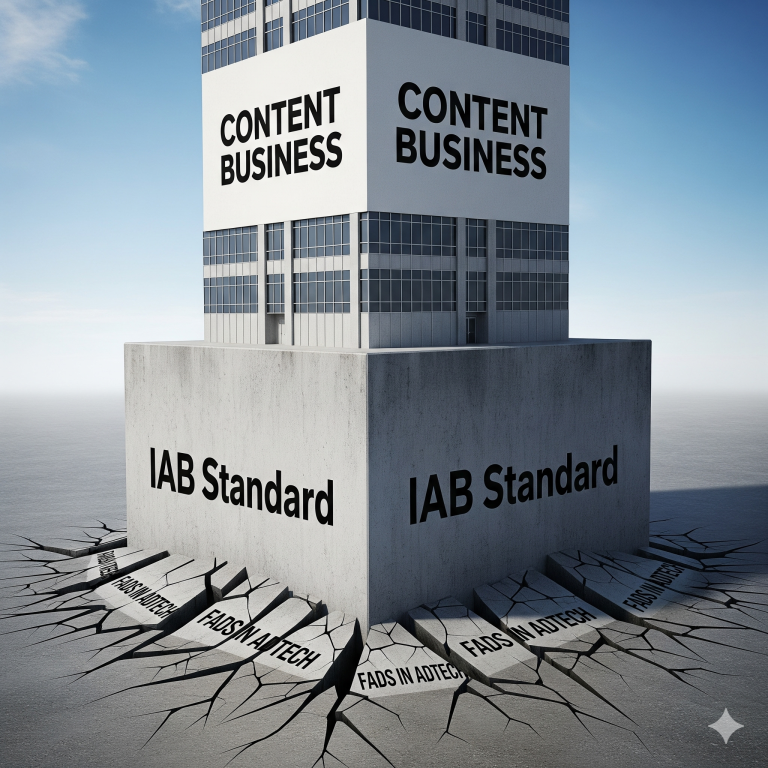The Crucial Role of Updating your Website Ad Layout
In the dynamic realm of digital publishing, staying ahead of the curve is essential to thrive in an ever-evolving …
March 13th, 2025
In the dynamic realm of digital publishing, staying ahead of the curve is essential to thrive in an ever-evolving landscape. As the demand for digital content continues to surge, so does the significance of programmatic advertising as a key revenue stream for digital publishers. However, tapping into the full potential of programmatic advertising requires more than just participation – it necessitates a strategic approach to website ad layout. In this article, we delve into why updating your website’s ad layout is a pivotal step towards maximizing programmatic advertising revenue.
- Enhancing User Experience
User experience lies at the heart of successful digital publishing. Visitors engage more actively with websites that offer an intuitive, clutter-free experience. Outdated and intrusive ad layouts can discourage users from spending time on your site and might even prompt them to employ ad-blockers. By revamping your website’s ad layout, you can create an environment that’s user-centric, fostering longer session durations, greater page views, and a heightened potential for ad engagement. A positive user experience translates into increased programmatic advertising revenue.
- Optimizing Ad Placements for Higher Visibility
The placement of ads on your website can significantly influence their performance. A static, unchanged ad layout might not capitalize on evolving user behavior and content consumption patterns. An updated ad layout allows you to strategically place ads where they’re most likely to garner attention. Leveraging tools that analyze user interactions, you can fine-tune ad placements to align with visitor engagement hotspots, thus driving click-through rates and conversions. By providing advertisers with prime placement options, you increase the perceived value of your ad inventory and, consequently, your programmatic advertising revenue.
- Responsive Design for Multidevice Access
Digital content consumption is no longer confined to desktops; it spans across various devices, including smartphones, tablets, and even smart TVs. An outdated ad layout that’s not optimized for various screen sizes can lead to a disjointed user experience, negatively impacting ad engagement. Updating your website’s ad layout to incorporate responsive design ensures that ads appear seamlessly across all devices, maintaining a consistent experience. This accessibility enhances user engagement, fostering an environment where programmatic ads can thrive.
- Seamless Integration of Native Advertising
Native advertising has emerged as a potent strategy in modern digital publishing. Its ability to blend seamlessly with content creates a less intrusive ad experience, thus leading to higher user engagement. An updated ad layout can accommodate native ads that mirror the format and style of surrounding content, making them feel like a natural part of the user’s experience. This integration enhances user trust and interaction, resulting in higher click-through rates and, consequently, increased programmatic advertising revenue.
- Continuous Improvement through Data-Driven Iteration
The digital landscape is ever-changing, and staying relevant requires continuous improvement. Regularly updating your website’s ad layout allows you to engage in data-driven A/B testing. By comparing different layouts, you can identify the most effective strategies for driving ad engagement. This iterative approach ensures that your website’s ad layout remains optimized to deliver maximum programmatic advertising revenue.
Conclusion
In the competitive realm of digital publishing, embracing programmatic advertising is a strategic move to drive revenue. However, the true potential of this revenue stream lies in the hands of those who adapt to the changing tides. An updated website ad layout, designed to enhance user experience, optimize ad placements, integrate native advertising, and accommodate various devices, is a powerful catalyst for maximizing programmatic advertising revenue. By prioritizing user-centric design and remaining committed to continuous improvement, digital publishers can harness the full potential of programmatic advertising, setting the stage for sustained success in the digital era.
Related Blogs

What “IAB Standard Banners” Look Like on a Modern Website
August 27th, 2025 by Doug Bishop
In the evolving landscape of digital publishing, display advertising remains a vital revenue stream. However, the way ads are presented and filled has transformed over the past decade. It is essential for publishers to grasp the significance of iab standard banners, recognize their presence on websites, and understand their impact on monthly earnings. The Basics: […]
Read More
Google Search Console Tutorial: Checking for CWV Errors
August 26th, 2025 by Doug Bishop
As a website owner, keeping an eye on your site’s performance is crucial for both user experience and search engine optimization (SEO). Google’s Core Web Vitals (CWV) are an important set of metrics that measure real-world user experience for loading performance, interactivity, and visual stability. CWV errors can negatively impact your search rankings, so it’s […]
Read More
How Core Web Vitals Became Central to Search Rankings
August 25th, 2025 by Doug Bishop
Google’s Helpful Content Update in 2023 first exposed a painful truth for publishers: visitor experience metrics are now revenue metrics. In 2025, that reality has hardened. Core Web Vitals — Cumulative Layout Shift (CLS), Interaction to Next Paint (INP), and Largest Contentful Paint (LCP) — have become the silent killers of search visibility, draining traffic […]
Read More